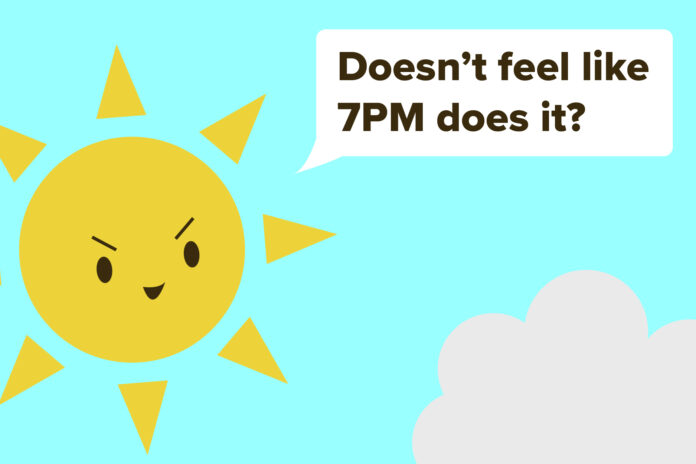The long-standing practice of changing our clocks for daylight savings might come to an end
Every spring, the clocks are turned one hour ahead to make the evening sunlight last longer. The beginning of daylight savings is dreaded by many as an hour of sleep is also lost the night it begins. Yet, as it inches closer to summer, many appreciate the sunlight lasting until 8 p.m. so they can enjoy the light. At UC Davis, students taking evening classes appreciate the evening light in the spring for other reasons as well.
“It makes me feel safer when I go back to the dorms from class at night, especially the classes further away from my dorm,” Afshin Amiri, a first-year psychology major, said in response to the benefits of longer daylight hours.
While there are some street lights on campus, some students don’t find them sufficient enough in providing a sense of safety. There have also been multiple comments about a lack of blue emergency call boxes on campus. One of the reasons for this shortage is the Davis Light Ordinance of 1966, which was implemented in order to limit light pollution, controls and restricts the erection of street lights or any light-emitting structures outdoors.
“In the fall, I had a class that got out at 8 p.m.,” Amiri said. “I remember that daylight savings ending was in the middle of the quarter, so for half of [fall] quarter, I got out of the class and it was still bright, and it was dark for the other half. It was a big difference.”
Amiri said his productivity is largely dictated by the sunshine.
“I feel more motivated to do stuff when the sun is out,” Amiri said. “It’s also pretty nice and warm when the sun is out, so I don’t feel like staying inside all the time.”
Many students agree they are more willing to take evening classes when they know the sun will be out when they go to and from their classes.
But in November, the clocks are turned back one hour to restore light to the morning hours, bringing darkness back to the evening.
In recent years, some regions have opened public debates on whether or not they should end the daylight savings practice altogether. The state of California still practices daylight savings. Some states such as Hawaii and Arizona, however, do not practice daylight savings. The European Union also recently declared that each country must decide on whether or not to abolish daylight savings by 2021.
“I don’t have much of an opinion on the issue,” said Alex Chavez, a fourth-year neurobiology, physiology and behavior major. “Daylight savings was instituted during World War II to supposedly conserve energy for the war effort.”
Since then, adjustments have been made to the clock accordingly, without anyone thinking twice about it.
“I don’t think it’s really necessary nowadays,” Chavez said. “And from what I’ve read on the subject, it seems like there are very minimal energy savings with daylight savings time.”
There are no long-term consequences to ending daylight savings. In fact, there might be some benefits, including less artificial light and decreased health problems.
WRITTEN BY: LINH NGUYEN – features@theaggie.org



